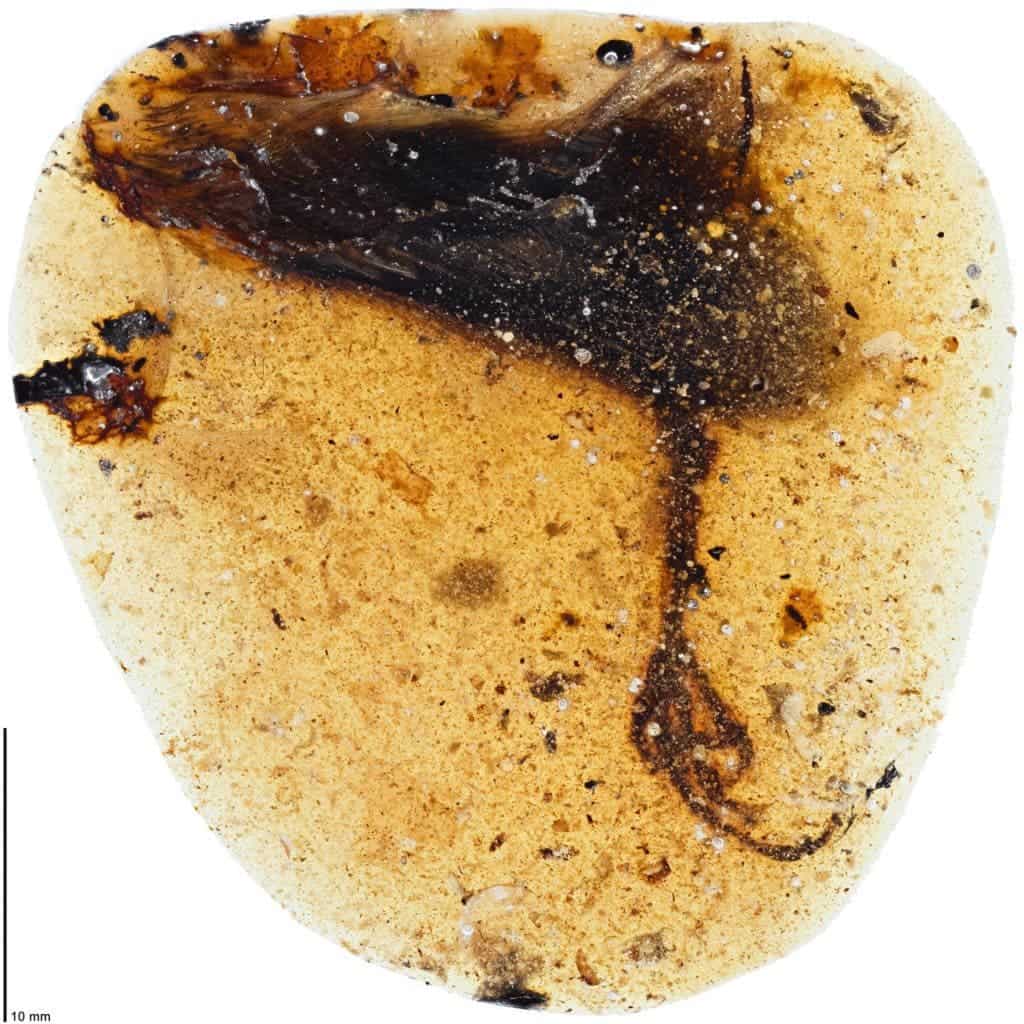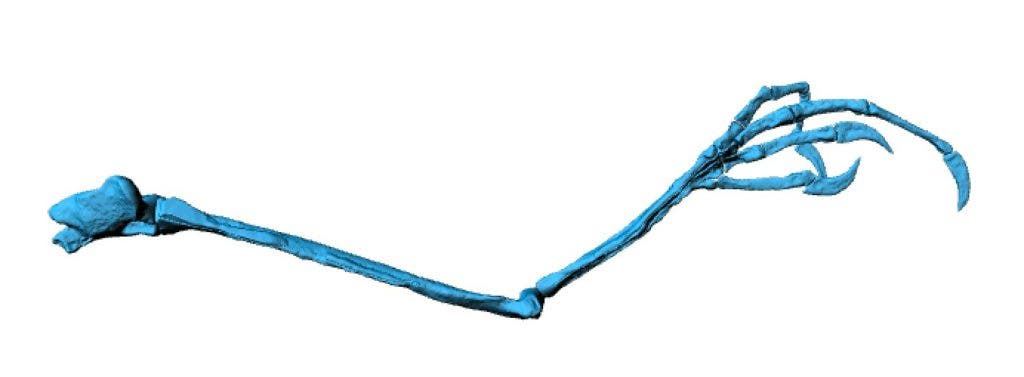The bird’s hyper-elongated third toe is longer than its whole lower leg, the authors report.

Researchers in China have discovered a new species of ancient bird preserved in amber– and it’s packing one seriously impressive toe. The fossilized beast, which lived around 99 million years ago, likely used the appendage to draw food out of tree trunks. According to the team, it’s the first time such a food structure has been observed in either living or extinct birds.
Bigtoe
“I was very surprised when I saw the amber,” says first author Lida Xing at China University of Geosciences (Beijing). “It shows that ancient birds were way more diverse than we thought. They had evolved many different features to adapt to their environments.”
The fossils include two isolated wings, an isolated foot with wing fragment, and two partial skeletons, most of them from juvenile individuals. The fossils date back to the Cretaceous period and were found encased in amber in 2014 in the Hukawng Valley of Myanmar. It was christened Elektorornis chenguangi. The new species’ most distinctive feature is its very, very long third toe measuring 9.8 millimeters. It is a full 41% longer than its second toe and 20% longer than its tarsometatarsus, the main bone in the lower legs of birds. Comparison to 20 other extinct bird species from the same time and 62 living birds showed that, showed that Elektorornis chenguangi is the only species so far discovered to evolve this foot structure.
Elektorornis chenguangi is part of a group of extinct birds called Enantiornithes, the most abundant type of bird known from the Mesozoic era. To the best of our knowledge, the Enantiornithines became extinct during the Cretaceous-Paleogene extinction event about 66 million years ago (the one where all the dinosaurs died) and left no living descendants behind. Elektorornis means “amber bird”.

Image credits Linda Xing et al., (2019), Cell Biology.
Based on the measurements they’ve taken of the fossils, the team reports that Elektorornis was smaller than a sparrow and that it was arboreal (i.e. it liked trees as opposed to the ground or water surfaces). The bird’s foot measures 3.5 centimeters in length, and weighs 5.5 grams.
“Elongated toes are something you commonly see in arboreal animals because they need to be able to grip these branches and wrap their toes around them,” says co-author Jingmai O’Connor at the Chinese Academy of Sciences. “But this extreme difference in toe lengths, as far as we know, has never been seen before.”
During the Mesozoic area, the Hukawng Valley of Myanmar was heavily forested with trees that produced resin as a defensive mechanism. The area is famed for its amber and fossil-bearing amber bits to this day, all thanks to those trees. The oldest known bee and a feathered dinosaur tail, among many others, have been discovered in amber from this valley. The team obtained the amber from a local trader, who didn’t know what animal this weird foot belonged to.
“Some traders thought it’s a lizard foot, because lizards tend to have long toes,” Xing says. “Although I’ve never seen a bird claw that looks like this before, I know it’s a bird. Like most birds, this foot has four toes, while lizards have five.”
As to why the bird needed such a long leg, the team still can’t say for sure. The only animal today to sport similar digitation is the aye-aye, a lemur that uses its long middle fingers to fish larvae and insects out of tree trunks for food. The team suspects Elektorornis chenguangi used its toe in a similar way.
“This is the best guess we have,” O’Connor says. “There is no bird with a similar morphology that could be considered a modern analog for this fossil bird. A lot of ancient birds were probably doing completely different things than living birds. This fossil exposes a different ecological niche that these early birds were experimenting as they evolved.”
The paper “A New Enantiornithine Bird with Unusual Pedal Proportions Found in Amber” has been published in the journal Current Biology.
Was this helpful?



